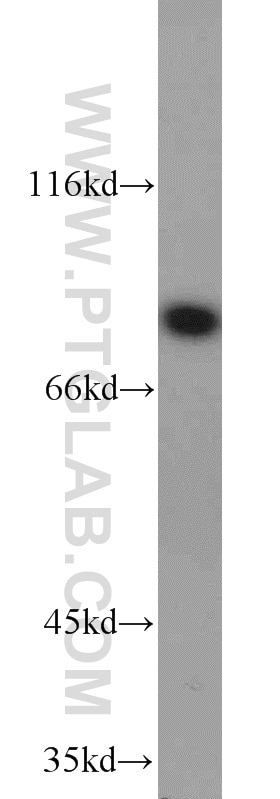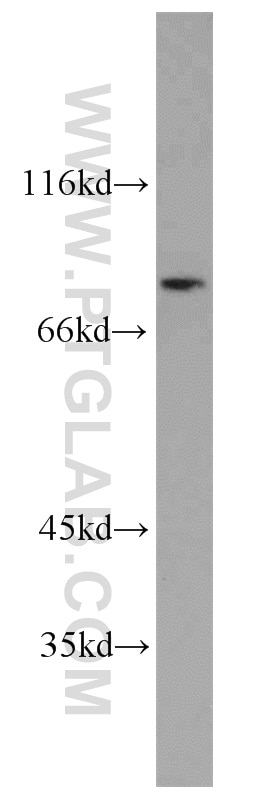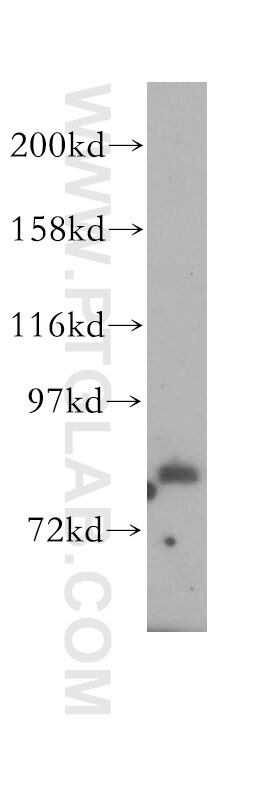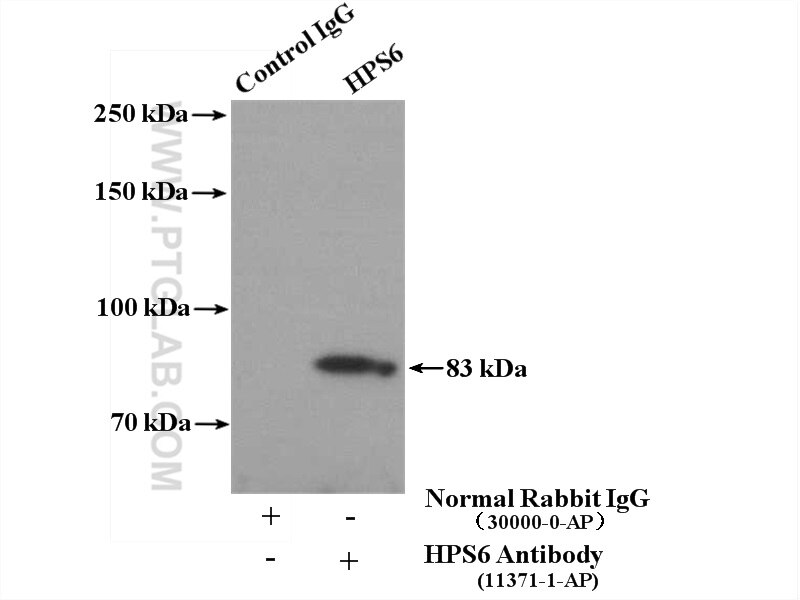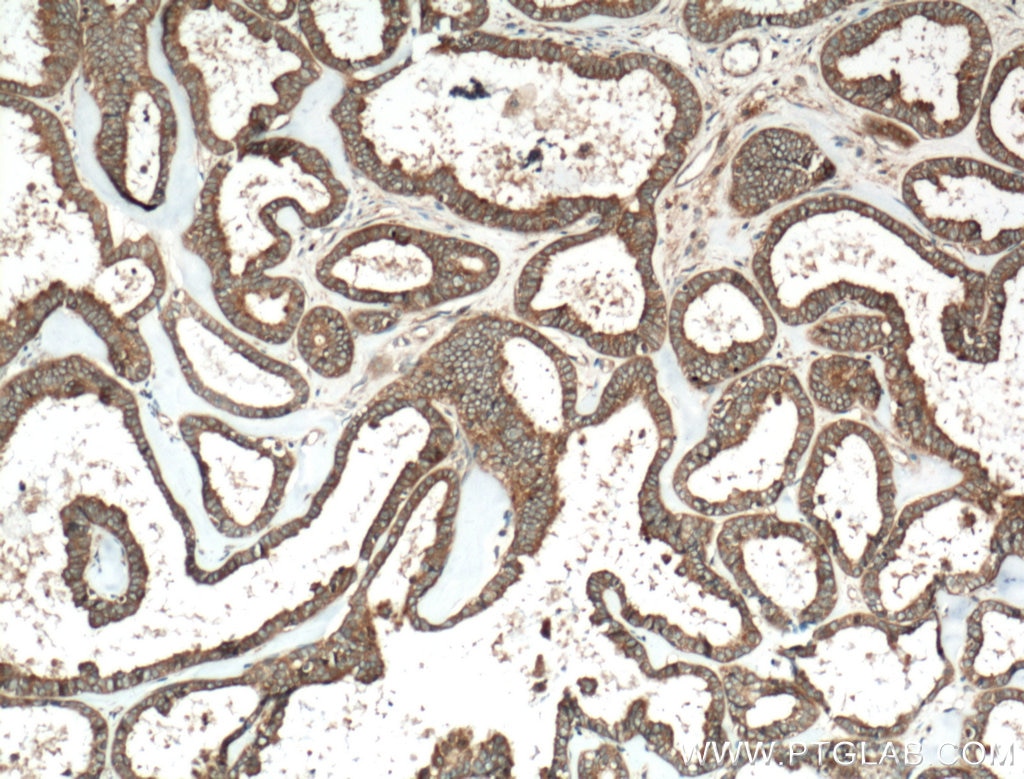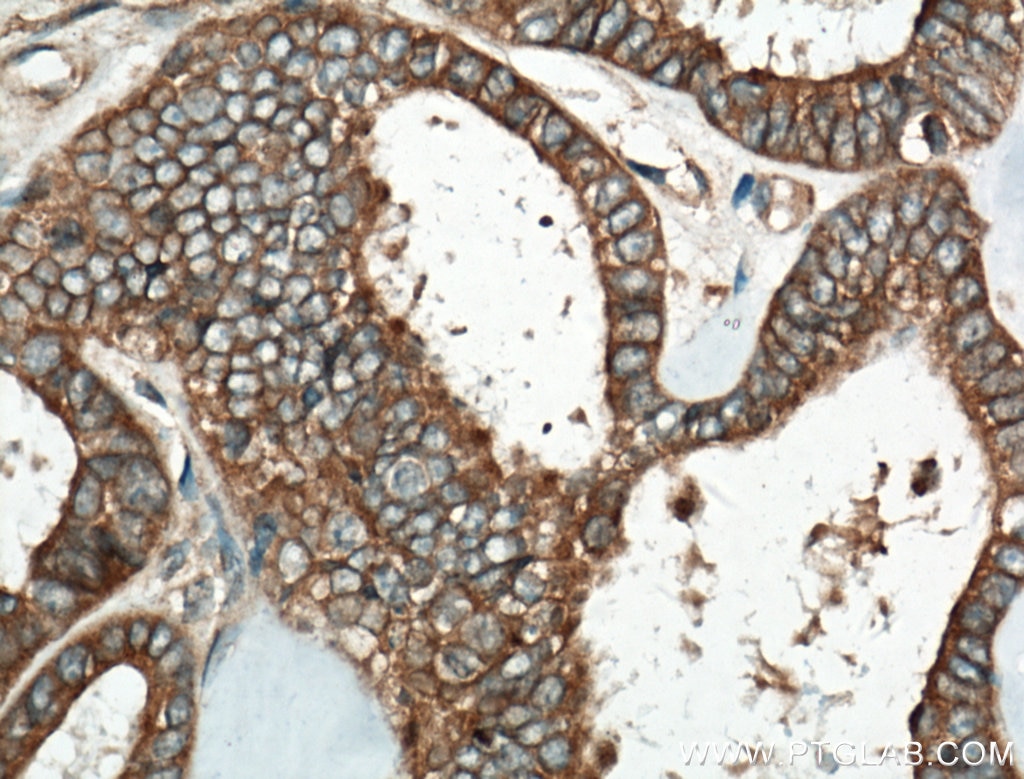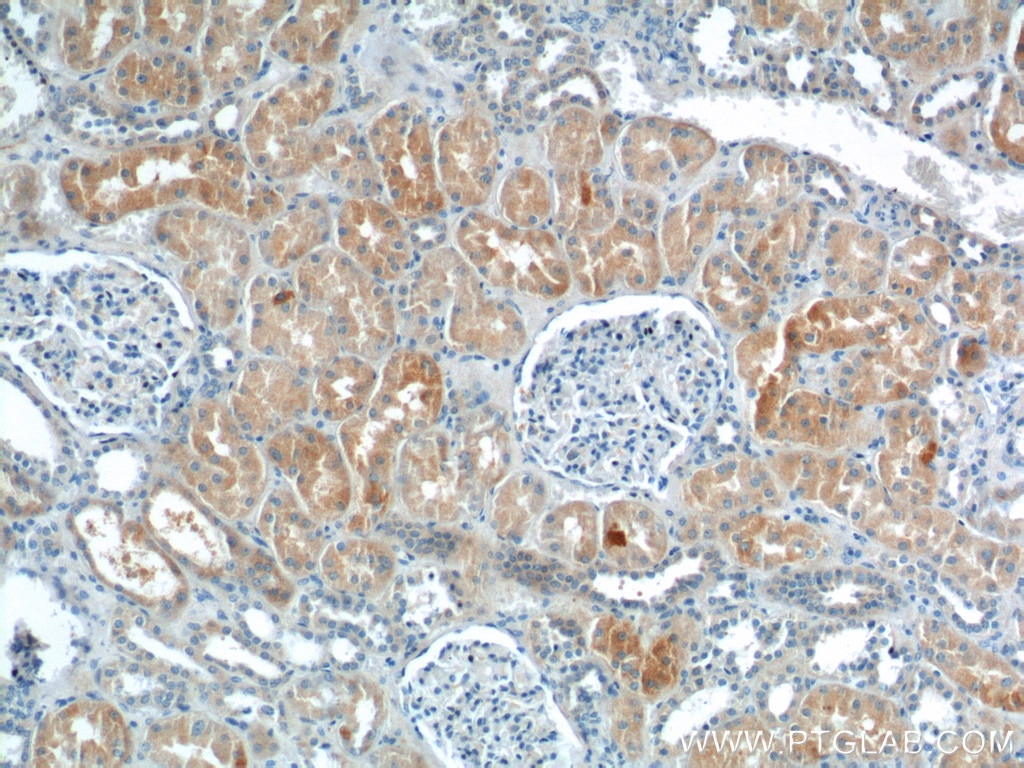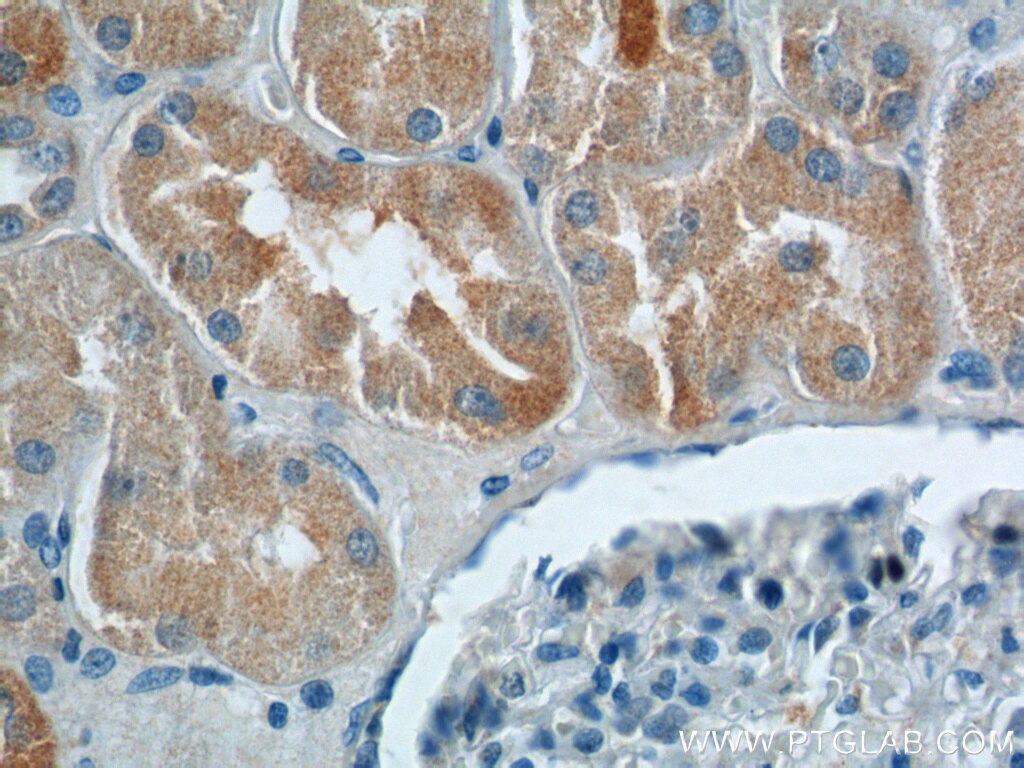- Phare
- Validé par KD/KO
Anticorps Polyclonal de lapin anti-HPS6
HPS6 Polyclonal Antibody for WB, IP, IHC, ELISA
Hôte / Isotype
Lapin / IgG
Réactivité testée
Humain, rat, souris
Applications
WB, IP, IHC, ELISA
Conjugaison
Non conjugué
N° de cat : 11371-1-AP
Synonymes
Galerie de données de validation
Applications testées
| Résultats positifs en WB | cellules HeLa, cellules HEK-293, cellules MCF-7 |
| Résultats positifs en IP | cellules HeLa |
| Résultats positifs en IHC | tissu de tumeur ovarienne humain, tissu rénal humain il est suggéré de démasquer l'antigène avec un tampon de TE buffer pH 9.0; (*) À défaut, 'le démasquage de l'antigène peut être 'effectué avec un tampon citrate pH 6,0. |
Dilution recommandée
| Application | Dilution |
|---|---|
| Western Blot (WB) | WB : 1:200-1:1000 |
| Immunoprécipitation (IP) | IP : 0.5-4.0 ug for 1.0-3.0 mg of total protein lysate |
| Immunohistochimie (IHC) | IHC : 1:50-1:500 |
| It is recommended that this reagent should be titrated in each testing system to obtain optimal results. | |
| Sample-dependent, check data in validation data gallery | |
Applications publiées
| KD/KO | See 1 publications below |
| WB | See 4 publications below |
Informations sur le produit
11371-1-AP cible HPS6 dans les applications de WB, IP, IHC, ELISA et montre une réactivité avec des échantillons Humain, rat, souris
| Réactivité | Humain, rat, souris |
| Réactivité citée | Humain, souris |
| Hôte / Isotype | Lapin / IgG |
| Clonalité | Polyclonal |
| Type | Anticorps |
| Immunogène | HPS6 Protéine recombinante Ag1929 |
| Nom complet | Hermansky-Pudlak syndrome 6 |
| Masse moléculaire calculée | 775 aa, 83 kDa |
| Poids moléculaire observé | 83 kDa |
| Numéro d’acquisition GenBank | BC011594 |
| Symbole du gène | HPS6 |
| Identification du gène (NCBI) | 79803 |
| Conjugaison | Non conjugué |
| Forme | Liquide |
| Méthode de purification | Purification par affinité contre l'antigène |
| Tampon de stockage | PBS with 0.02% sodium azide and 50% glycerol |
| Conditions de stockage | Stocker à -20°C. Stable pendant un an après l'expédition. L'aliquotage n'est pas nécessaire pour le stockage à -20oC Les 20ul contiennent 0,1% de BSA. |
Informations générales
Hermansky-Pudlak syndrome (HPS) defines a group of at least seven autosomal recessive disorders characterized by albinism and prolonged bleeding due to defects in the lysosome-related organelles, melanosomes and platelet-dense granules, respectively. HSP6, also named as Ru, regulates the synthesis and function of lysosomes and of highly specialized organelles, such as melanosomes and platelet dense granules. It acts as cargo adapter for the dynein-dynactin motor complex to mediate the transport of lysosomes from the cell periphery to the perinuclear region.
Protocole
| Product Specific Protocols | |
|---|---|
| WB protocol for HPS6 antibody 11371-1-AP | Download protocol |
| IHC protocol for HPS6 antibody 11371-1-AP | Download protocol |
| IP protocol for HPS6 antibody 11371-1-AP | Download protocol |
| Standard Protocols | |
|---|---|
| Click here to view our Standard Protocols |
Publications
| Species | Application | Title |
|---|---|---|
Blood vWF maturation and release are controlled by two regulators of Weibel-Palade body biogenesis: exocyst and BLOC-2.
| ||
EMBO Rep Rab22A recruits BLOC-1 and BLOC-2 to promote the biogenesis of recycling endosomes. | ||
Am J Respir Cell Mol Biol Gene-edited MLE-15 Cells as a Model for the Hermansky Pudlak Syndromes. | ||
Adv Sci (Weinh) Evoked Weibel-Palade Body Exocytosis Modifies the Endothelial Cell Surface by Releasing a Substrate-Selective Phosphodiesterase |
